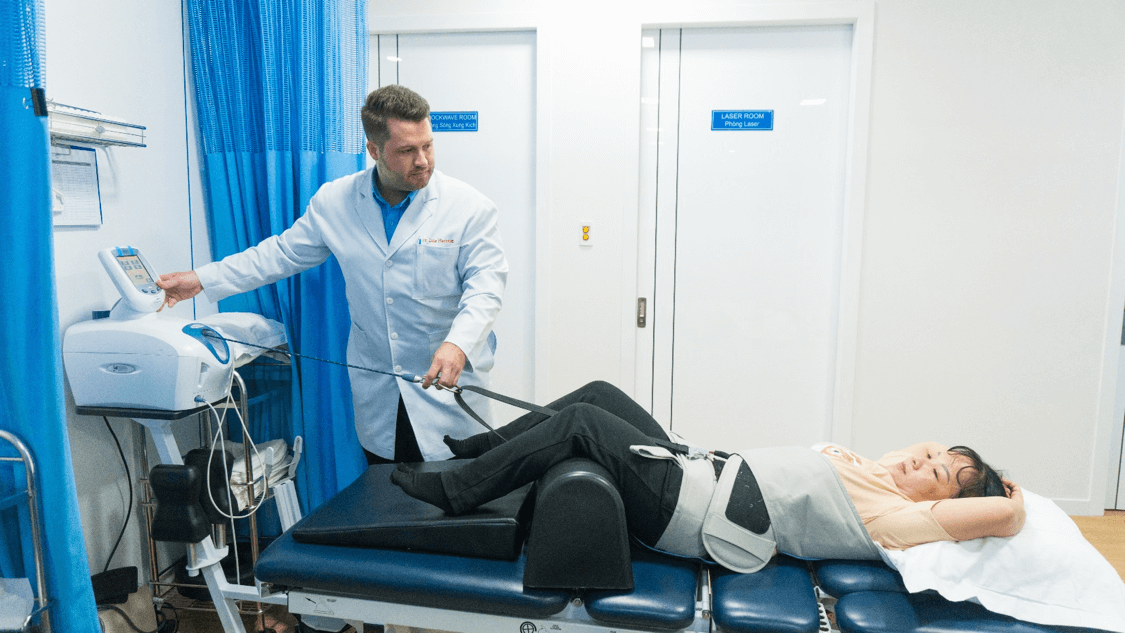In today’s fast-paced world, spinal health often takes a back seat, overshadowed by our daily commitments. Yet, our spine is the backbone—literally—of our physical well-being. When spinal issues arise, they affect not just our ability to move but also our overall quality of life. Enter spinal decompression therapy, a revolutionary non-surgical approach that’s transforming the way we approach spine wellness. This article explores how this therapy can be a life-changing solution for those struggling with chronic back pain, disc issues, and more.
What Is Spinal Decompression Therapy?
Spinal decompression therapy is a non-invasive treatment designed to relieve pressure on the spine. Using specialized equipment, the therapy gently stretches the spine, creating negative pressure within the discs. This process encourages retraction of herniated or bulging discs, relieving pressure on the nerves and promoting healing. The concept of spinal decompression has evolved over the years, but today’s advanced machines offer precision and comfort, making it accessible to a wide range of patients.
There are two main types of spinal decompression: surgical and non-surgical. Surgical decompression involves invasive procedures like laminectomy or discectomy. Non-surgical decompression, which we’ll focus on here, offers a safer, gentler alternative for many.

How Spinal Decompression Therapy Works
Spinal decompression therapy works by elongating the spine and creating space between the vertebrae. Patients lie on a motorized table, and the machine applies controlled traction to the spine. This process allows bulging or herniated discs to retract, reducing pressure on the spinal nerves.
The key to the therapy’s success lies in its ability to reduce disc pressure. As the discs retract, they create a vacuum effect, drawing oxygen, water, and nutrients back into the disc. This helps to rehydrate the discs and promote healing. Over time, patients experience significant pain relief and improved mobility.
Benefits of Spinal Decompression Therapy
The benefits of spinal decompression therapy are extensive:
- Pain Relief: One of the primary goals is to alleviate chronic back pain caused by compressed nerves or damaged discs.
- Restored Alignment: By decompressing the spine, the therapy helps restore proper alignment, which can improve posture and reduce strain on other parts of the body.
- Enhanced Mobility: With reduced pain and proper spinal alignment, patients often notice an improvement in their overall mobility and flexibility.
- Disc Health: By promoting rehydration and nutrient flow, the therapy helps damaged discs heal, preventing further issues down the line.
Who Can Benefit from Spinal Decompression Therapy?
Spinal decompression therapy is beneficial for a wide range of conditions. If you suffer from any of the following, you may be an ideal candidate:
- Chronic Back Pain: Whether due to injury, poor posture, or degenerative conditions, spinal decompression can alleviate pain.
- Sciatica: If you experience shooting pain down your legs due to nerve compression, decompression therapy can help relieve the pressure.
- Herniated or Bulging Discs: The therapy is particularly effective in treating these conditions by encouraging disc retraction and reducing nerve pressure.
- Degenerative Disc Disease: For those with disc degeneration, spinal decompression can offer relief and slow the progression of the condition.
Spinal Decompression Therapy vs. Traditional Treatments
How does spinal decompression therapy stack up against more traditional treatments? Let’s compare:
- Physical Therapy: While physical therapy can strengthen muscles and improve mobility, it may not address the underlying cause of disc-related pain as effectively as spinal decompression.
- Chiropractic Care: Chiropractic adjustments focus on realigning the spine, but spinal decompression specifically targets disc issues, making it a more targeted solution for those with herniated or bulging discs.
- Surgery: Spinal decompression offers a non-invasive alternative to surgery, which comes with risks and a lengthy recovery period. For many, decompression is a safer and less daunting option.
What to Expect During a Spinal Decompression Therapy Session
Wondering what a spinal decompression session is like? Here’s a breakdown:
- Consultation: Before starting therapy, your practitioner will assess your condition and determine if spinal decompression is right for you.
- The Treatment: During the session, you’ll lie comfortably on a specialized table. The machine will apply gentle traction to your spine, targeting the affected areas.
- Session Duration: Sessions typically last between 30 to 45 minutes, and most patients require a series of treatments over several weeks for optimal results.
Is Spinal Decompression Therapy Safe?
Yes, spinal decompression therapy is considered a safe and effective treatment for many spinal conditions. The therapy is non-invasive, meaning there’s no need for surgery, anesthesia, or recovery time. However, like any medical treatment, it’s essential to work with a qualified practitioner who can tailor the therapy to your specific needs. In rare cases, patients may experience mild soreness after treatment, but this typically subsides quickly.
Scientific Evidence Supporting Spinal Decompression Therapy
A growing body of research supports the efficacy of spinal decompression therapy. Clinical studies have shown that it can effectively reduce pain and improve function in patients with disc-related issues. Patient testimonials also speak to the therapy’s success, with many reporting significant improvements in their quality of life after treatment.
Combining Spinal Decompression Therapy with Other Treatments
Spinal decompression therapy works well on its own, but it can be even more effective when combined with other treatments:
- Physical Therapy: Strengthening the muscles that support the spine can enhance the benefits of decompression therapy.
- Chiropractic Care: Combining decompression with regular chiropractic adjustments can provide comprehensive spine wellness.
- Holistic Approaches: Yoga, massage, and acupuncture can also complement spinal decompression by promoting relaxation and flexibility.
Lifestyle Changes to Complement Spinal Decompression Therapy
While spinal decompression therapy can work wonders, maintaining spine health requires a holistic approach. Consider making these lifestyle changes to enhance your results:
- Exercise: Regular exercise, especially activities that promote core strength and flexibility, can support your spinal health.
- Healthy Weight: Maintaining a healthy weight reduces strain on the spine and can prevent future issues.
- Ergonomics: Pay attention to your posture and make ergonomic adjustments to your workspace to protect your spine.
Spine Wellness and Mental Health
It’s important to remember that spine wellness isn’t just about physical health—it’s also about mental well-being. Chronic pain can take a toll on your mental health, leading to anxiety, depression, and stress. By reducing pain and improving mobility, spinal decompression therapy can have a positive impact on your mental well-being as well.
Cost of Spinal Decompression Therapy
The cost of spinal decompression therapy can vary depending on the practitioner and location. Some insurance plans may cover part of the treatment, but it’s essential to check with your provider. When considering the cost, keep in mind the long-term benefits of improved spine health and reduced pain.
Choosing the Right Spinal Decompression Specialist
Choosing the right specialist is crucial for getting the best results from spinal decompression therapy. Look for practitioners with experience and training in spinal decompression. Don’t hesitate to ask questions about their approach, success rates, and how they customize treatment for individual patients.
Conclusion
Spinal decompression therapy is a powerful tool in the quest for spine wellness. Whether you’re struggling with chronic back pain, sciatica, or disc issues, this non-invasive treatment offers a safe and effective way to restore your spine’s health. Prioritizing spine wellness can change your life, giving you the freedom to move pain-free and enjoy a higher quality of life.
FAQs
- How long does it take to see results from spinal decompression therapy? Most patients begin to experience relief after a few sessions, but a full course of treatment is often needed for lasting results.
- Is spinal decompression therapy painful? No, the therapy is generally painless. Some patients may feel mild discomfort during or after treatment, but this usually subsides quickly.
- Can spinal decompression therapy help with sciatica? Yes, spinal decompression therapy is particularly effective for treating sciatica by relieving pressure on the sciatic nerve.
- How many sessions of spinal decompression therapy are typically required? The number of sessions varies depending on the individual’s condition, but most treatment plans involve 15 to 30 sessions.
Is spinal decompression therapy covered by insurance? Some insurance plans may cover spinal decompression therapy, but it’s best to check with your provider to understand your coverage options.

